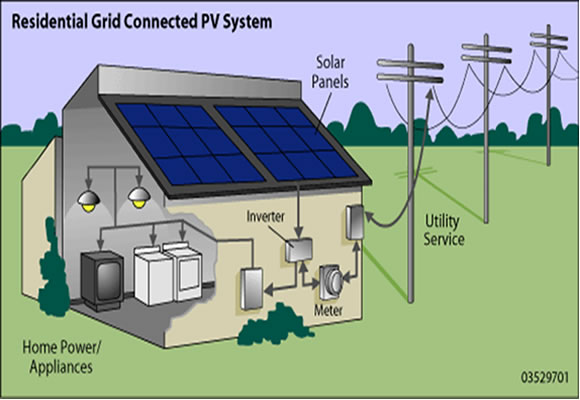Solar PV Basics – How Do Solar Panels Work?
“Solar PV” stands for solar “photovoltaic” panels. Very simply, solar PV panels turn sunlight into electricity, and this is how:
-
Every day, light hits your roof’s solar panels with photons (particles of sunlight).
-
The panel converts those photons into electrons of direct current (“DC”) electricity. Naturally, the sunnier it is, the more energy is produced by the panels.
-
Those produced electrons flow out of the panel and into an inverter and other electrical safety devices.
-
The inverter converts that “DC” power into alternating current or “AC” power. AC power is the kind of electric juice that your television, computer, and toasters use when plugged into the wall outlet.
-
A bi-directional meter keeps track of the all the power your solar system produces. Any solar energy that you don’t use immediately will go back into the grid through the meter. Then at night or on cloudy days, that extra solar juice is credited back to your bill. So, net metering is similar to having a virtual battery-back up system (we explain more about grid-tied solar home solar systems later)
MORE>>>>>>>
| 









